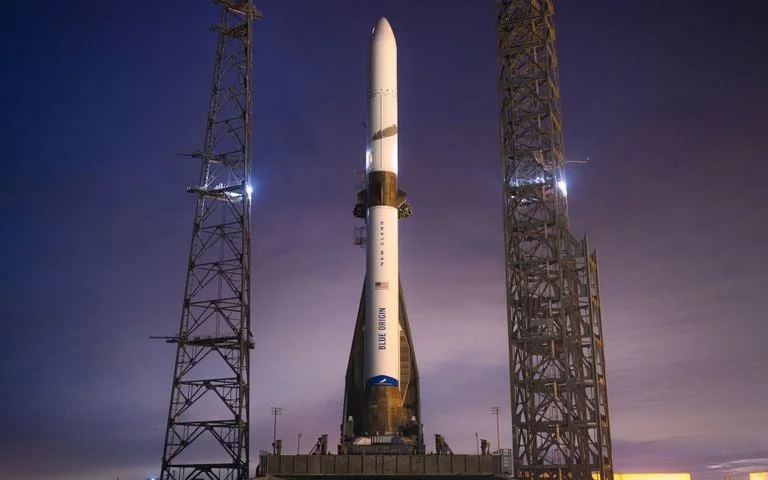Okay, so Blue Origin finally managed to land their New Glenn booster. Second try's the charm, apparently. The PR spin is heavy on the "historic" angle, but let's dissect what this actually means.
New Glenn's Flight Path: A Calculated Gamble?
The core fact is this: New Glenn launched, deployed NASA's ESCAPADE Mars probes, and then—crucially—stuck the landing on their floating platform, "Jacklyn." This is a big deal because reusability is the name of the game if you want to bring down launch costs. SpaceX has been doing it for years, so Blue Origin is playing catch-up. The CEO, Dave Limp, even threw in a "Never Tell Me The Odds" quote. (Someone get that guy a marketing handbook).
The ESCAPADE mission itself is interesting. Two small satellites heading to Mars to study the solar wind's impact on the Martian atmosphere. The price tag? A relatively modest $107.4 million. That's peanuts compared to the billion-dollar flagship missions. The probes were initially supposed to hitch a ride on another mission, but ended up on New Glenn. That's what I find genuinely puzzling. Was this a "we need a payload, any payload" situation to get New Glenn off the ground?
The mission's trajectory is also unconventional. A year-long loiter around Earth before slingshotting to Mars. As Robert Lillis, the principal investigator, said, it's a "flexible" approach that could "queue up spacecraft" without waiting for perfect planetary alignment. That’s a clever workaround, but it also adds significantly to the mission duration—22 months total.
Reusability: The Key to the Kingdom?
Landing the booster is the key element here. Blue Origin is talking about "launch, land, repeat, again and again." That's the SpaceX model, and it's what makes spaceflight cheaper. The question is, how reusable is "reusable?" How much refurbishment does that booster need after each flight? What’s the turnaround time? These are the crucial data points that Blue Origin isn't exactly shouting from the rooftops.
And here's where my skepticism kicks in. We've seen the pretty pictures of the landing. We've heard the triumphant quotes. But what about the hard data? What's the actual cost per launch after factoring in refurbishment? What's the lifespan of these boosters? How many times can they realistically be reused before needing major overhauls or replacement?

Blue Origin claims they have "several vehicles in production and multiple years of orders." Okay, but what are the specifics? Who are these customers, and what are they paying? Amazon's Project Kuiper is mentioned, along with AST SpaceMobile and "several telecommunications providers." It's a vague list. What percentage of these contracts are firm commitments versus options?
The company is also working toward National Security Space Launch (NSSL) certification with the U.S. Space Force. That's a big deal because it unlocks lucrative government contracts. But NSSL certification is a rigorous process. It's not just about sticking a landing once; it's about demonstrating consistent, reliable performance.
The "Never Tell Me The Odds" booster itself, by the way, was apparently nicknamed that. A bit on the nose, if you ask me. It also featured "a variety of upgrades to improve performance." Upgrades from what baseline? The first flight that failed to land the booster? Details, people, details.
So, Are They *Really* Ready?
Blue Origin has cleared a major hurdle. They've proven they can launch a heavy-lift rocket, deploy a payload, and land the booster. New Glenn Launches NASA’s ESCAPADE, Lands Fully Reusable Booster But they're still a long way from competing head-to-head with SpaceX. Reusability isn't just about sticking the landing; it's about driving down costs and increasing flight cadence. Blue Origin needs to show us the data to prove they can do that consistently and reliably. The fact that they don't readily provide that data, well, that speaks volumes.
Still a Long Way to Go
The successful landing is a good first step, but it's just that—a first step. Blue Origin needs to stop with the PR fluff and start releasing the hard data. Until then, I'm reserving judgment.
